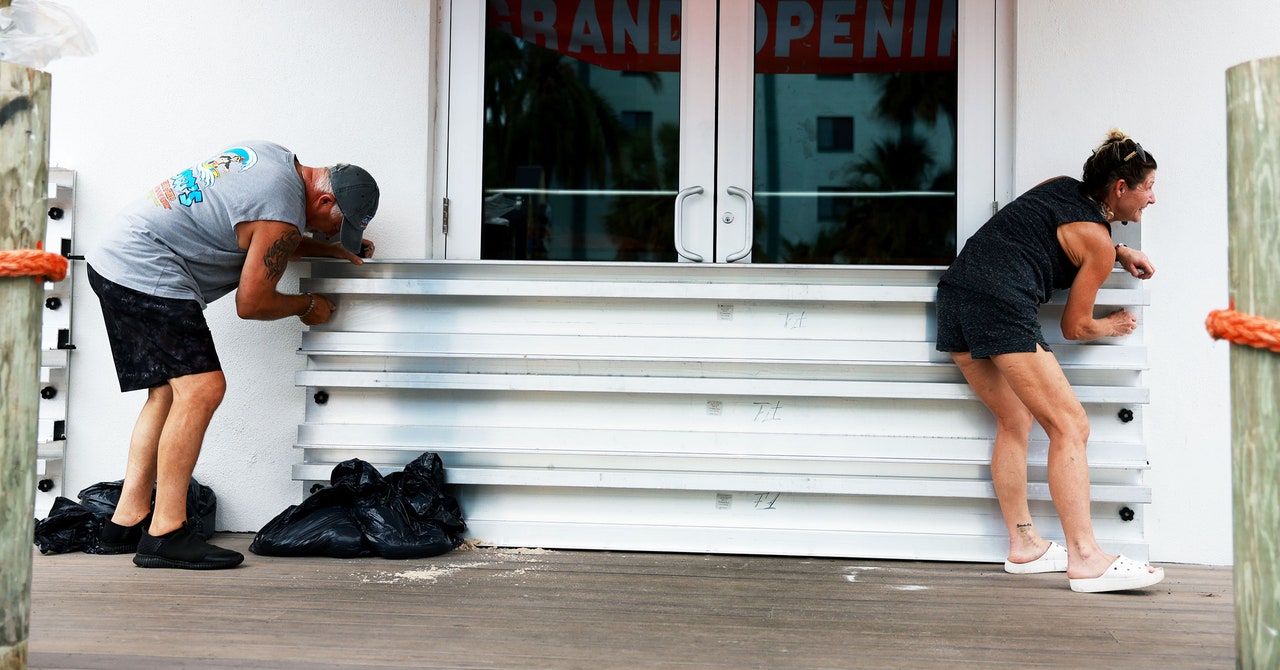The Panhandle of Florida in the Wake of a Catastrophic Category 4 Hurricane: Warnings for the First Day after Hurricane Idalia
Hurricane Idalia intensified overnight and is now a Category 4 storm heading toward Florida’s Gulf Coast. It has 130 mile an hour winds and is going to bring catastrophic waves and potentially submerge the coast in up to 16 feet of flooding. You can track the storm’s path here.
Florida officials are urging residents along the Gulf Coast to finish making their storm preparations on Tuesday before Hurricane Idalia makes landfall in the state Wednesday morning.
The strongest part of the storm will be over Florida’s Big Bend, where the state’s long peninsula curves to meet its Panhandle. Governors in Georgia and the Carolinas have declared states of emergency because of the threat of tornadoes and heavy rains from the storm, which is expected to hit the southeastern United States.
Most people know that a storm brings wind and rain, but they don’t realize that it also causes extreme danger to coastal communities. That’s what happens when a storm becomes a giant, swirling bulldozer that pushes a wall of water toward the shore. The Gulf Coast of Florida is one of the most storm-surge-vulnerable areas in the United States or the world, according to Rick Knabb, former director of the National Hurricane Center. The only way you can make it through a storm surge is to not be present when it happens.
The National Weather Service said the area could see life-threatening winds, with the possibility of structural damage to buildings and even the complete destruction of mobile homes.
The Eyes of Idalia: Hurricane Warnings and Storm Surges in the Big Bend Area of Florida, Prescribed for Tuesday Morning Press Conference
Forecasters expect the eye of Idalia to chart a course toward Florida’s Big Bend, the region where the peninsula meets the panhandle. According to forecasters, no major hurricanes have tracked into the region’s Apalachee Bay since 1851.
The White House stated that Biden had approved an emergency declaration for Florida, and that he spoke to DeSantis on Monday about storm preparations.
More than a third of Florida counties are under either mandatory or voluntary evacuation orders, and the state was marshaling resources to be able to restore power in the case of outages and conduct rescue operations if needed. DeSantis has also deployed 5,500 members of the National Guard.
As of Tuesday morning, Idalia was about 120 miles away from Dry Tortugas with maximum sustained winds of 85 miles per hour, according to the National Hurricane Center. There were warnings for storm surge and hurricanes around the state of Florida.
“You still have time this morning to be able to make your final preparations if you are in one of the areas that is in the path of the storm surge and you’re told to evacuate,” Gov. Ron DeSantis said in a Tuesday morning press conference.
Florida’s emergency management chief, Kevin Guthrie, also urged people who are forced to evacuate to bring comfort items for their children, such as their favorite toys or snacks, and not to leave pets behind.
“We are going to experience historical flood surge up into the Big Bend area,” said Kevin Guthrie, executive director of the Florida Division of Emergency Management. This is not something to be messing with.
The Big Bend is a low-lying area which has quaint and old-time fishing villages and small beach communities.
Water Floods: Fueling Tropical Hurricanes with Sea-Induced Winds. Heavily-Energy Encounters in Cedar Key, Florida
The warming of the world’s oceans are providing fuel for hurricanes. Trade winds have been slow recently in the tropical Atlantic and across the Caribbean. The winds would travel deep into the cooler waters. But with less of that upwelling, the waters in the Caribbean and around Florida have been heating like a pot on slow boil. “All of that has been festering for weeks and weeks,” Knabb says. The water is being used by the storm to fuel it.
Idalia is pushing a column of saltwater toward the shore. The higher the water is, the stronger the winds are. The hurricane’s low pressure is also creating a sort of offshore dome of water centered under the storm. The ocean has less atmospheric pressure than other places. Brian McNoldy is a Hurricane researcher at the University of Miami and he says that thedome peaks under the eye. “When the hurricane makes landfall, that dome of ocean water comes along with it.”
Many communities along hundreds of miles of coastline boarded up their windows, filled their grocery store shelves with water and put their buildings under aggrandizement. Many people have left Cedar Key, an island city with 700 people. The mayor said that his family had been here for a long time. “We haven’t seen a storm this bad, ever.”
